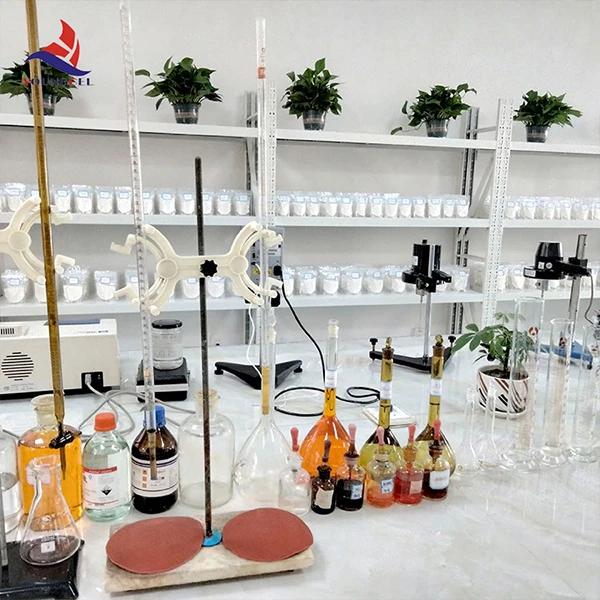Understanding Hydroxyethyl Methyl Cellulose Properties and Applications
Hydroxyethyl methyl cellulose (HEMC) is a cellulose ether derived from natural cellulose, a biopolymer obtained from plants. With its unique set of properties, HEMC has gained significant attention in various industries, including construction, pharmaceuticals, food, and cosmetics. This article delves into the characteristics, benefits, and applications of HEMC, shedding light on its critical role in modern formulations and processes.
Properties of Hydroxyethyl Methyl Cellulose
HEMC is known for its versatility and beneficial qualities. As a water-soluble polymer, HEMC exhibits excellent thickening, binding, and viscosity-modifying properties. Its chemical structure consists of hydroxyethyl and methyl groups, which confer hydrophilicity and lipophilicity, allowing it to interact favorably with both water and oils.
One of the most remarkable features of HEMC is its ability to form stable, clear solutions. This clarity is particularly advantageous in applications where the visual aesthetic of a product is essential. Additionally, HEMC is non-ionic, meaning it does not carry a charge, which makes it compatible with a wide range of other ingredients. Therefore, it can be combined with various polymers, surfactants, and other compounds without compromising effectiveness.
Another critical property of HEMC is its thermal stability. It maintains its functionality over a broad temperature range, making it suitable for high temperature processing conditions. Moreover, HEMC is resistant to microbial degradation, which ensures a longer shelf life for formulations that incorporate it.
Applications of Hydroxyethyl Methyl Cellulose
hydroxi ethyl methyl cellulos

1. Construction Industry HEMC is widely used as a thickener and water-retention agent in dry-mixed mortars, such as tile adhesives, joint compounds, and renders. It enhances workability, prevents segregation, and improves the bonding strength of materials. Moreover, its water-retention properties allow for longer open times, reducing the risk of premature drying.
2. Pharmaceuticals In the pharmaceutical sector, HEMC serves as a binder and film-forming agent in tablet formulations. Its film-forming capabilities aid in the controlled release of active ingredients, making it valuable in developing sustained-release medications. Additionally, it is used in topical formulations, contributing to desired viscosity and texture.
3. Food Industry In food applications, HEMC acts as a thickening agent, stabilizer, and emulsifier. It is often found in sauces, dressings, and dairy products, where it enhances texture and mouthfeel. Furthermore, its use as a fat replacer in low-calorie foods helps meet consumer demand for healthier options.
4. Cosmetics and Personal Care HEMC is a popular ingredient in creams, lotions, and gels due to its thickening and emulsifying properties. It improves product consistency and enhances the spreadability of formulations on the skin, contributing to consumer satisfaction.
Conclusion
Hydroxyethyl methyl cellulose is a multifaceted compound that plays a pivotal role across diverse industries. Its unique properties, including water solubility, thermal stability, and non-ionic nature, make it an invaluable ingredient in numerous applications. As industries continue to innovate and adapt to changing consumer demands, HEMC stands out as a reliable and effective component, enhancing product performance and user experience. Its ability to deliver results in various formulations underscores the significance of HEMC in modern technological advancements.
-
The Application and Significance of Construction RdpNewsMay.19,2025
-
Industrial Grade HpmcNewsMay.19,2025
-
Building Coating Adhesive Building Coating Adhesive HpmcNewsMay.19,2025
-
Application Of Hpmc For Detergent For Detergent In DetergentsNewsMay.19,2025
-
Application Of Hpmc Cellulose In Cement-Based MaterialsNewsMay.19,2025
-
Application Of High Quality Hpmc For Construction In The Field Of ConstructionNewsMay.19,2025




